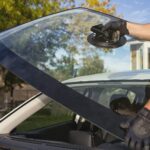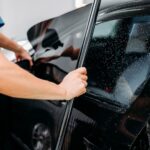
Auto Glass Repair is a crucial aspect of vehicle maintenance that often goes overlooked until a minor chip or crack turns into a significant safety hazard. Whether it’s a small stone chip on the windshield or a severe crack that obstructs your view, understanding the essentials of repair auto glass can save you time, money, and ensure your safety on the road. This guide will walk you through everything you need to know about autoglass repair, from identifying the damage to the repair process and maintenance tips.

Introduction
Auto glass is more than just a transparent shield that protects you from the elements. It is an integral part of your vehicle’s structural integrity, designed to support the roof, provide clear visibility, and safeguard you in the event of an accident. Even minor damage can compromise these functions, making timely repair and maintenance essential. This guide provides a comprehensive overview of repair auto glass, ensuring you have the knowledge to make informed decisions and keep your vehicle in top condition.
Identifying the Damage
The first step in repair auto glass is identifying the type and extent of the damage. Common forms of auto glass damage include:
Chips: Small, circular dings caused by stones or debris. They are usually less than a quarter in diameter and can often be repaired if addressed promptly.
Cracks: Lines of damage that can range from a few inches to spanning the entire windshield. Long cracks generally require replacement rather than repair.
Star Breaks: A type of chip with lines radiating from the center, resembling a star. These can often be repaired if the damage is not extensive.
Bullseyes: Circular damage with a distinguishable central point, often repairable if not too large.
The Repair Process
Autoglass repair typically involves the following steps:
Assessment: A professional technician assesses the damage to determine whether repair or replacement is necessary. Factors such as the size, depth, and location of the damage are considered.
Cleaning the Area: The damaged area is thoroughly cleaned to remove any debris and ensure a strong bond during the repair process.
Injecting Resin: For chip and crack repairs, a special resin is injected into the damaged area. This resin is then cured using ultraviolet (UV) light, which hardens the material and restores the integrity of the glass.
Polishing: Once the resin is cured, the area is polished to smooth out any imperfections and improve visibility.
When to Replace Instead of Repair
While many minor damages can be repaired, there are situations where replacement is the safer and more effective option:
Damage in the Driver’s Line of Sight: Repairs can sometimes leave minor distortions, which can impair visibility.
Large or Multiple Cracks: Extensive damage that weakens the structural integrity of the windshield typically requires a full replacement.
Edge Damage: Cracks or chips near the edge of the glass are more likely to spread and compromise the windshield’s strength.
Maintenance and Prevention Tips
Preventing auto glass damage and ensuring the longevity of repairs involves a few simple practices:
Safe Driving Habits: Maintain a safe distance from other vehicles to avoid debris kicked up from the road.
Avoid Extreme Temperatures: Rapid temperature changes can cause existing damage to worsen. Gradually warm up or cool down your vehicle instead of using extreme settings.
Regular Inspections: Routinely check your windshield and other auto glass for signs of damage. Early detection can prevent small issues from becoming larger, more expensive problems.
Use Caution with Cleaning: Avoid using harsh chemicals or abrasive materials on your auto glass. Stick to products designed for glass cleaning and use a soft cloth.

Conclusion
Autoglass repair is an essential aspect of vehicle maintenance that should not be overlooked. Understanding the types of damage, the repair process, and when replacement is necessary can help you maintain your vehicle’s safety and functionality. By adopting preventive measures and addressing issues promptly, you can extend the life of your auto glass and ensure a clear, safe driving experience. Remember, timely attention to auto glass damage not only saves money but also enhances your safety on the road.






